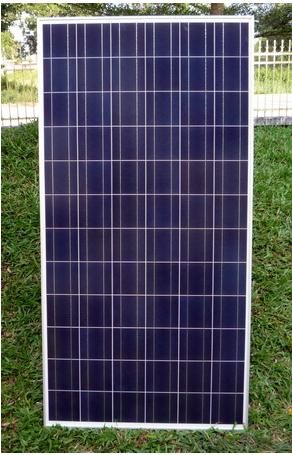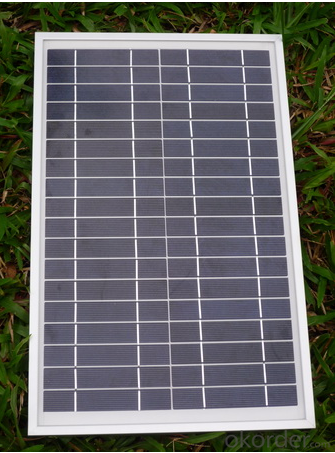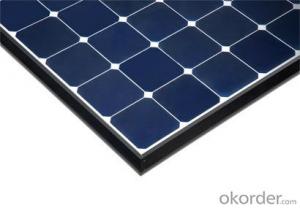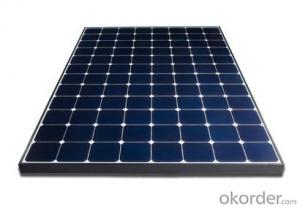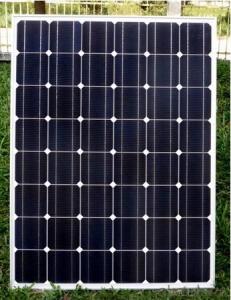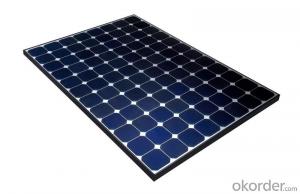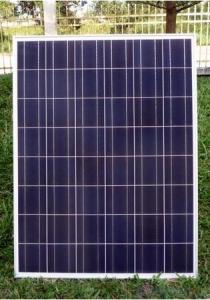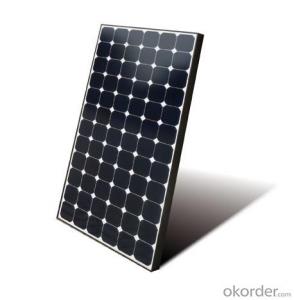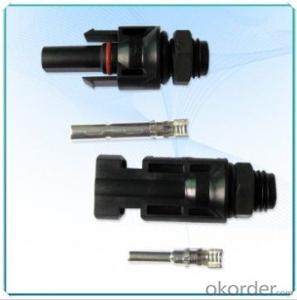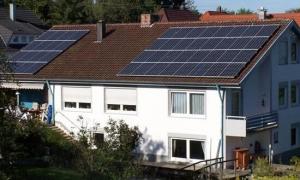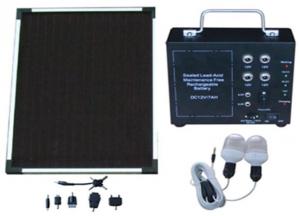Home Solar Energy Systems - CNBM On Grid System 30000W with Certificate UL, TUV, CE
- Loading Port:
- Shanghai
- Payment Terms:
- TT OR LC
- Min Order Qty:
- 50 watt
- Supply Capability:
- 1000 watt/month
OKorder Service Pledge
OKorder Financial Service
You Might Also Like
Specification
CNBM On Grid System 30000W with Certificate UL TUV CE
Product description
They range from small residential and commercial rooftop systems to large utility-scale solar power stations. Unlike stand-alone power systems, a grid-connected system rarely includes an integrated battery solution, as they are still very expensive. When conditions are right, the grid-connected PV system supplies the excess power, beyond consumption by the connected load, to the utility grid.
Connection of the photovoltaic power system can be done only through an interconnection agreement between the consumer and the utility company. The agreement details the various safety standards to be followed during the connection.[4]
A photovoltaic (in short PV) module is a packaged, connected assembly of typically 6×10 solar cells. Solar Photovoltaic panels constitute the solar array of a photovoltaic system that generates and supplies solar electricity in commercial and residential applications. Each module is rated by its DC output power under standard test conditions, and typically ranges from 100 to 365 watts. The efficiency of a module determines the area of a module given the same rated output – an 8% efficient 230 watt module will have twice the area of a 16% efficient 230 watt module. There are a few commercially available solar panels available that exceed 22% efficiency[1] and reportedly also exceeding 24%.[2][3] A single solar module can produce only a limited amount of power; most installations contain multiple modules. A photovoltaic system typically includes a panel or an array of solar modules, a solar inverter, and sometimes a battery and/or solar tracker and interconnection wiring.
The price of solar power, together with batteries for storage, has continued to fall so that in many countries it is cheaper than ordinary fossil fuel electricity from the grid (there is "grid parity").[4]
Off-the-grid is a system and lifestyle[1] designed to help people function without the support of remote infrastructure, such as an electrical grid. In electricity, off-grid can be stand-alone power system or mini-grids typically to provide a smaller community with electricity. Off-grid electrification is an approach to access electricity used in countries and areas with little access to electricity, due to scattered or distant population. The term off-the-grid (OTG) can refer to living in a self-sufficient manner without reliance on one or more public utilities. People who adopt this lifestyle are called off-gridders.[2]
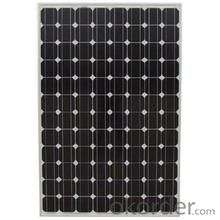
Application
Industrial
Commercial
Residential
Feature
Residential, grid-connected rooftop systems which have a capacity more than 10 kilowatts can meet the load of most consumers.[2] They can feed excess power to the grid where it is consumed by other users. The feedback is done through a meter to monitor power transferred. Photovoltaic wattage may be less than average consumption, in which case the consumer will continue to purchase grid energy, but a lesser amount than previously. If photovoltaic wattage substantially exceeds average consumption, the energy produced by the panels will be much in excess of the demand. In this case, the excess power can yield revenue by selling it to the grid. Depending on their agreement with their local grid energy company, the consumer only needs to pay the cost of electricity consumed less the value of electricity generated. This will be a negative number if more electricity is generated than consumed.[3] Additionally, in some cases, cash incentives are paid from the grid operator to the consumer.
Packaging
With carton and box
- Q: How does the efficiency of solar panels vary based on the angle and orientation?
- The efficiency of solar panels can vary based on their angle and orientation. The angle at which solar panels are tilted can significantly impact their performance. Ideally, solar panels should be positioned at an angle that maximizes their exposure to sunlight throughout the day. The efficiency of solar panels is highest when they are oriented perpendicularly to the sun's rays. This means that solar panels should be facing the sun directly, with no shading or obstructions. When solar panels are angled correctly, they can capture the maximum amount of sunlight, leading to higher energy production. The orientation of solar panels also plays a crucial role in their efficiency. In the Northern Hemisphere, solar panels should generally be facing south to receive the most sunlight. By facing south, panels can receive sunlight for the longest duration during the day. However, in the Southern Hemisphere, solar panels should face north for optimal efficiency. If solar panels are not properly angled or oriented, their efficiency can decrease. For example, if panels are tilted too steeply or too shallow, they may not receive the maximum amount of sunlight. Similarly, if solar panels are not facing the right direction, they may not capture sunlight as efficiently. It is important to note that solar panels can still generate electricity even if not perfectly angled or oriented. However, their efficiency will be lower, resulting in a lower energy output. Additionally, the efficiency of solar panels can also be affected by factors such as temperature, dust, and shading from nearby objects or trees. To maximize the efficiency of solar panels, it is recommended to consult with professionals who can evaluate the specific location and provide guidance on the optimal angle and orientation for the panels. By ensuring that solar panels are properly angled and oriented, one can maximize their energy production and ultimately reap the benefits of solar power.
- Q: Can a solar energy system be installed in an area with a high lightning risk?
- Yes, a solar energy system can be installed in an area with a high lightning risk. However, additional precautions and safety measures must be taken during the installation process to protect the system from potential lightning strikes. This may include installing lightning protection systems, grounding equipment, and surge protectors to minimize the risk of damage.
- Q: Can solar energy systems be used in areas with limited access to emergency services?
- Yes, solar energy systems can be used in areas with limited access to emergency services. Solar energy systems operate independently of the power grid, making them suitable for remote locations. They can provide a reliable and sustainable source of electricity, enabling essential services such as lighting, communication, and medical equipment in emergencies. Additionally, solar energy systems can be combined with energy storage solutions to ensure continuous power supply even during periods of low sunlight or at night.
- Q: I want to install a full set of domestic solar heating equipment does not know how much money to spend, please.
- According to the annual use of 280 square meters of construction area of the average daily consumption of 11 square meters, energy saving rate of more than 50% of the total energy consumption of more than 11 square meters. Cost: 38000 yuan (excluding heating part); system design life: 20 years; saving ratio: 280 square housing annual use of wall mounted gas boiler is about 3000 cubic meters of natural gas per cubic, an average of 2.2 yuan, a total of 6600 yuan.
- Q: How do solar energy systems impact energy security?
- Solar energy systems can have a positive impact on energy security by diversifying our energy sources and reducing our dependence on fossil fuels. By harnessing the power of the sun, solar energy systems provide a renewable and abundant source of clean energy, which decreases our reliance on imported energy and helps to stabilize energy prices. Additionally, solar energy systems are decentralized and can be installed at various locations, making them less vulnerable to disruptions in the energy supply chain. Overall, the widespread adoption of solar energy systems contributes to a more secure and sustainable energy future.
- Q: How do solar energy systems impact grid stability?
- Solar energy systems can have both positive and negative impacts on grid stability. On one hand, solar power can help enhance grid stability by reducing the strain on traditional power plants and diversifying the energy mix. Solar energy is typically generated during the day when demand is high, which can help meet peak demand and stabilize the grid. On the other hand, the intermittent nature of solar power can present challenges to grid stability, as it is dependent on weather conditions. This intermittency can lead to fluctuations in power generation, which may require additional grid management strategies and energy storage solutions to ensure stability.
- Q: Can solar energy systems be used in powering sports stadiums?
- Certainly, sports stadiums can be powered by solar energy systems. In fact, numerous stadiums worldwide have already begun implementing solar energy systems to fulfill their energy requirements. To harness sunlight and convert it into electricity, solar panels can be installed on stadium rooftops, parking lots, or open areas. The primary benefit of utilizing solar energy to power sports stadiums is its sustainability and cost-effectiveness. Solar energy is a renewable energy source that doesn't emit any greenhouse gases during operation, making it environmentally friendly and assisting in reducing carbon footprint. Additionally, once the initial investment is made to install solar panels, the ongoing operational costs are relatively low, resulting in significant energy bill savings for the stadium. The size and structure of sports stadiums make them excellent candidates for solar energy systems. The stadiums' expansive surface areas provide ample space for installing a substantial number of solar panels, which can generate a significant amount of electricity. Furthermore, the open spaces surrounding the stadium allow for optimal sunlight exposure, ensuring maximum energy generation. Moreover, solar energy systems can be integrated with other technologies to enhance efficiency and functionality. For example, battery storage systems can be utilized to store excess energy generated during the day and use it during nighttime events or periods of low sunlight. This ensures a continuous and reliable power supply to the stadium, regardless of weather conditions or the time of day. In conclusion, solar energy systems can certainly be employed to power sports stadiums. They offer a sustainable and cost-effective solution to meet the energy requirements of these large facilities while also reducing their environmental impact. With further advancements in solar technology and decreasing costs, it is expected that more sports stadiums worldwide will embrace solar energy as their primary power source in the future.
- Q: Can solar energy systems be used in areas with limited sunlight?
- Yes, solar energy systems can still be used in areas with limited sunlight. While solar energy systems are most effective in regions with abundant sunlight, advancements in technology have made it possible to harness solar energy even in areas with less sunlight. Additionally, solar panels can still generate electricity on cloudy days or during periods of reduced sunlight. However, the efficiency and output of solar energy systems may be lower in areas with limited sunlight compared to sunnier regions.
- Q: What is the impact of electromagnetic interference on the performance of solar panels?
- Electromagnetic interference can have a negative impact on the performance of solar panels. It can disrupt the proper functioning of the panels, causing fluctuations in the power output and reducing the efficiency of the system. This interference can be caused by nearby electronic devices or power lines, and can lead to decreased energy production and potential damage to the panels. Implementing appropriate shielding and mitigation techniques is crucial to minimize the impact of electromagnetic interference on the performance and longevity of solar panels.
- Q: Can solar energy systems be used for powering electric vehicle carpooling services?
- Yes, solar energy systems can be used to power electric vehicle carpooling services. Solar energy systems generate electricity by converting sunlight into usable energy, which can be used to charge electric vehicles. By installing solar panels on the carpooling service's parking lot or charging stations, the vehicles can be charged directly from the sun's energy. This not only reduces the carbon footprint of the carpooling service but also helps in promoting renewable energy usage. Additionally, solar-powered carpooling services can benefit from reduced electricity costs as they would rely less on the grid for charging the vehicles.
Send your message to us
Home Solar Energy Systems - CNBM On Grid System 30000W with Certificate UL, TUV, CE
- Loading Port:
- Shanghai
- Payment Terms:
- TT OR LC
- Min Order Qty:
- 50 watt
- Supply Capability:
- 1000 watt/month
OKorder Service Pledge
OKorder Financial Service
Similar products
Hot products
Hot Searches
Related keywords


